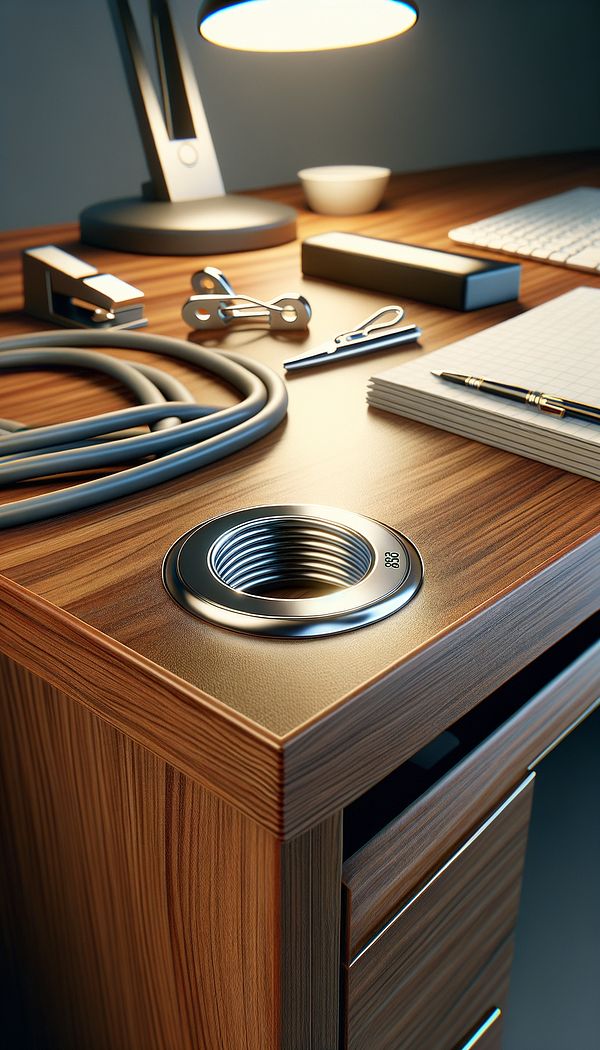What is a Grommet?
A grommet is a ring or edge strip inserted into a hole through thin material, typically made of metal, rubber, or plastic.
Description
In the realm of interior design, a grommet serves the dual purpose of protecting material from damage and providing a neat, finished look to various design elements. These simple, yet effective, components are particularly crucial when it comes to managing and concealing cables and wires in a design setup, ensuring safety and maintaining aesthetic appeal. Crafted from a variety of materials including metal, rubber, or plastic, grommets are versatile in their application and can be tailored to suit the specific needs of a project, whether it requires a touch of elegance, durability, or functionality.
Grommets are widely used in office furniture, specifically in desks for cable management, but their application extends beyond this to areas such as window treatments, and various home decor elements. By allowing cables and wires to pass through surfaces while minimizing friction and protecting their insulation, grommets play a pivotal role in extending the lifespan of these items. Additionally, their use in decor, such as in drapery or as decorative elements on furniture, showcases their aesthetic versatility.
Usage
Grommets are commonly found in modern office settings, integrated into desks and workstations to facilitate neat cable management. In residential interiors, they can be used in window treatments, such as curtains with grommet-top headings, which offer a contemporary look and easy functionality. Craft enthusiasts also utilize grommets to add a professional finish to handmade bags, apparel, and home decor items.
FAQs
-
How do grommets differ from eyelets?
Both grommets and eyelets are used to reinforce holes and protect materials, but grommets are typically made of more durable materials and are designed for heavier-duty applications. Eyelets, on the other hand, are often smaller and used in lightweight materials such as textiles.
-
Can grommets be decorative?
Yes, grommets can be decorative as well as functional. They come in various finishes, colors, and materials, allowing them to blend seamlessly with the design aesthetic or stand out as a design feature on their own.
-
How are grommets installed?
Grommets are generally installed using a grommet tool, which can either be a simple handheld tool for light applications or a press for heavier-duty installations. The material is first punctured, and then the grommet is inserted and secured into place, often requiring a specific setting tool to ensure it fits snugly.
Practical Application
When incorporating grommets into your design, consider the material and the environment where they will be used to choose the right type. For areas with a lot of cable traffic or where moisture might be present, metal or rubber grommets are preferred for their durability and resistance. In decorative applications, select grommets that complement your design scheme, either by matching the color and material of the surrounding elements or by choosing a contrasting style to make a statement.
-
Art NouveauArt Nouveau is an international style of art, architecture, and applied art, especially the decorative arts, that was most popular between 1890 and 1910.
-
TallboyA tallboy is a piece of furniture featuring a chest of drawers often combined with a wardrobe on top.
-
Block FrontBlock front refers to a furniture front design that protrudes in the middle section, creating a convex appearance.
-
Dado JointA dado joint is a method of connecting pieces of wood where a slot is cut in one piece to fit the end of another.
-
SourcingSourcing in interior design refers to the process of finding and selecting various materials, products, and services needed to bring a design vision to life.
